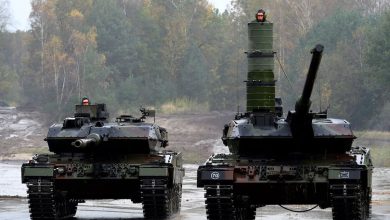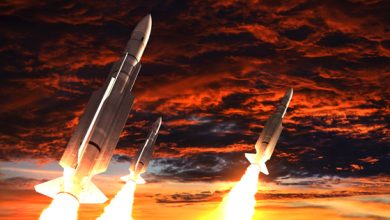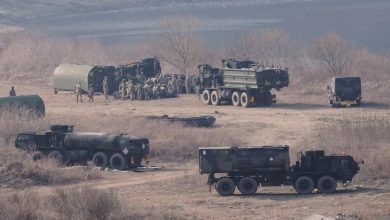United Launch Alliance’s Vulcan flies second certification mission

United Launch Alliance, one of the Pentagon’s top satellite launch providers, launched a second flight of its new Vulcan rocket — a significant step toward certifying the vehicle to fly national security missions.
The rocket flew from Cape Canaveral Space Force Station in Florida early this morning. The flight was previously slotted to carry Sierra Space’s space plane, Dream Chaser, but development delays changed those plans. Instead, Vulcan flew a dummy payload and conducted several engine demonstrations and experiments as part of the mission.
ULA CEO Tory Bruno called the mission “nominal” during a launch webcast, though he noted there was an “observation” related to a solid rocket booster that the company will look into.
ULA is owned by defense giants Lockheed Martin and Boeing. Along with Elon Musk’s SpaceX, it’s one of two companies with rockets cleared to fly national security space missions for DOD and the intelligence community. The company is in the process of replacing its legacy Atlas V and Delta IV vehicles — longtime workhorse rockets for the U.S. government — with the more powerful Vulcan.
That process requires ULA to complete two certification flights of its new rocket, the first of which went off without a hitch in January. Following today’s launch, ULA will collect data from the mission, perform its own analysis and then hand that package off to the Space Force, which will conduct its own review. The service will then compare the data and decide whether to certify the rocket.
Bruno told reporters Oct. 2 that if the Space Force deems it a clean mission, the data analysis process will take a matter of weeks to complete and final certification should follow soon after.
Maintaining that timeline is important both for ULA and the Space Force as the company is scheduled to fly two military missions before the end of the year. One of those, USSF-106, includes an experimental spacecraft called Navigation Technology Satellite-3 that will demonstrate capabilities to augment the service’s GPS constellation.
The second mission, USSF-87, is a classified Space Force launch.
“We do need to certify to support our national security space customer who has missions that are relatively urgent,” Bruno said.
Those two missions will lead ULA into a busy year of launches. Its Vulcan and Atlas V rockets are manifested to fly a combined 20 commercial and Defense Department missions in 2025. Bruno said he’s confident in the company’s ability to meet that challenge, highlighting a slew of construction projects underway to expand its launch and manufacturing capacity.
“My infrastructure is coming together, and I feel really great about that. And, you know, the factory’s crushing it,” he said. “Having said all that, yeah, this is a big deal. This is a big increase in launch rate for us, and there’s a lot of work to get done.”
ULA has spent between $5 billion and $7 billion to develop Vulcan and another $1 billion to build the infrastructure to support it, according to Bruno. The rocket was supposed to start launching military missions in 2022, but faced a series of setbacks, including development and testing snafus involving its BE-4 engine, built by Jeff Bezos’ Blue Origin.
Those delays have put at least two military satellite launches on hold, causing Space Force officials to question whether ULA can manage a projected uptick in the military’s launch cadence. In May, Frank Calvelli, assistant secretary of the Air Force for space acquisition and integration, sent ULA a letter relaying those concerns and calling for Lockheed and Boeing to pull together an independent review team to review ULA’s readiness.
The team started its work in June and Bruno said it has since finished its review. He said the review yielded “great suggestions” but largely confirmed that ULA is “on a very solid track to ramping up and meeting all of our obligations and plans.”
The review team is in the process of briefing Lockheed and Boeing leadership as well as the Space Force, so Bruno wouldn’t discuss the findings in detail. But he said the process identified new tools the company could use to improve production and operational planning and management and offered ideas to improve resilience.
“Everything they brought to me as recommendations I thought were great ideas, and I plan to do them,” he said.
Courtney Albon is C4ISRNET’s space and emerging technology reporter. She has covered the U.S. military since 2012, with a focus on the Air Force and Space Force. She has reported on some of the Defense Department’s most significant acquisition, budget and policy challenges.







